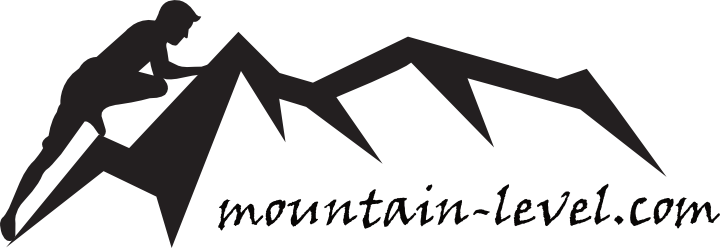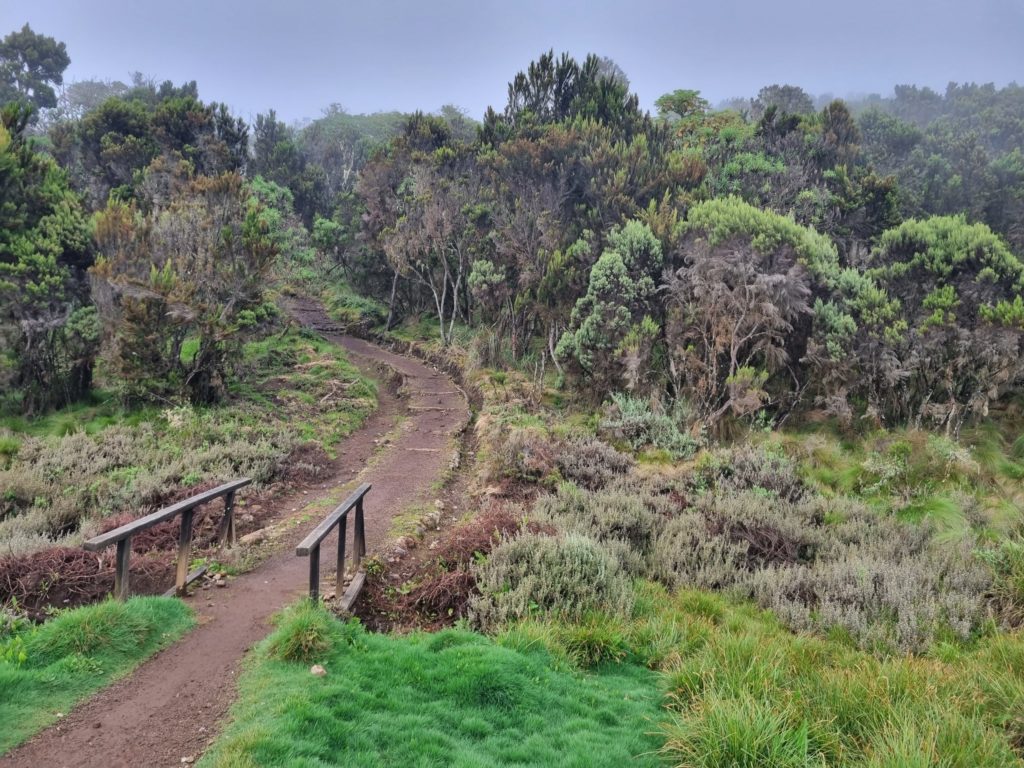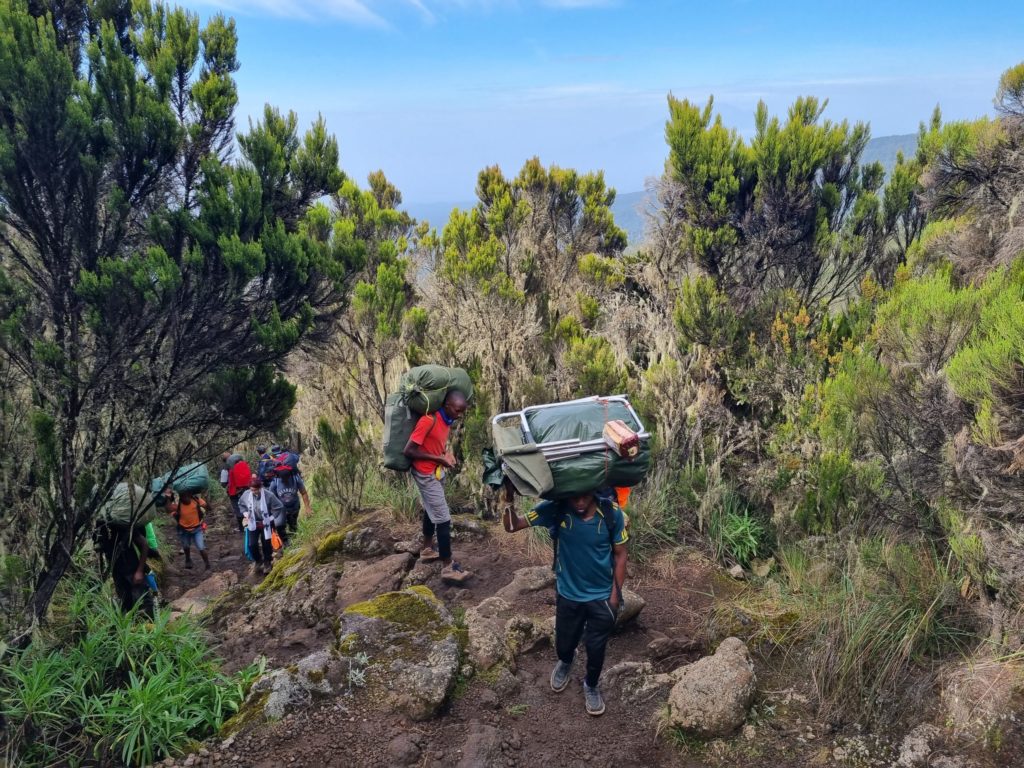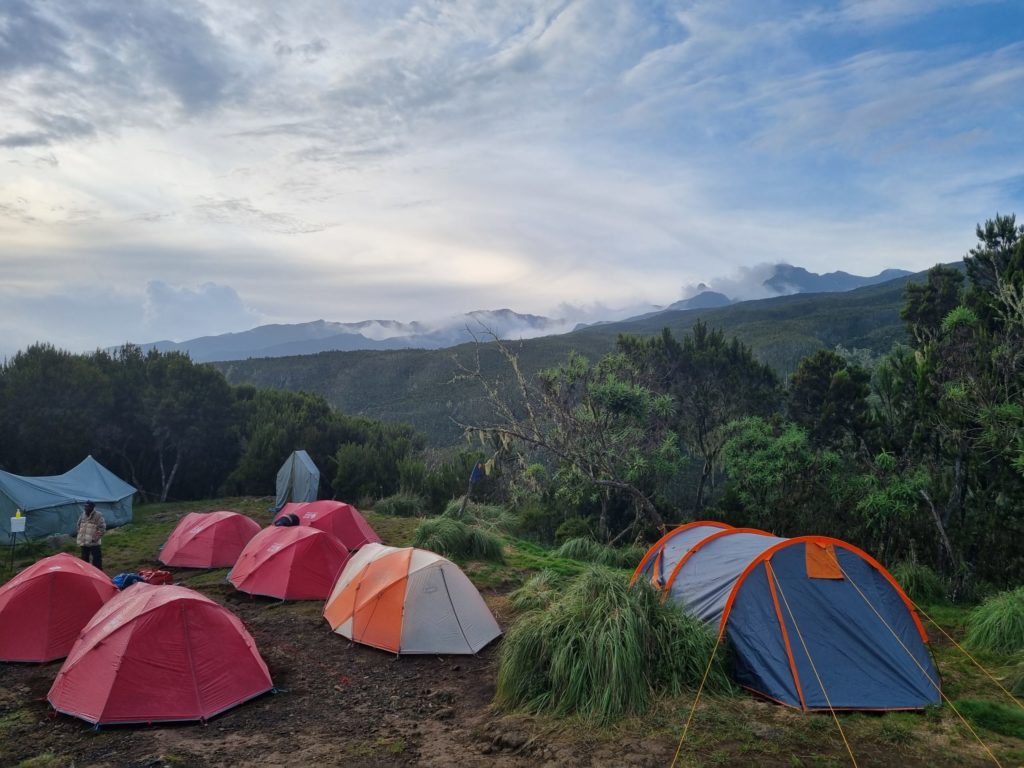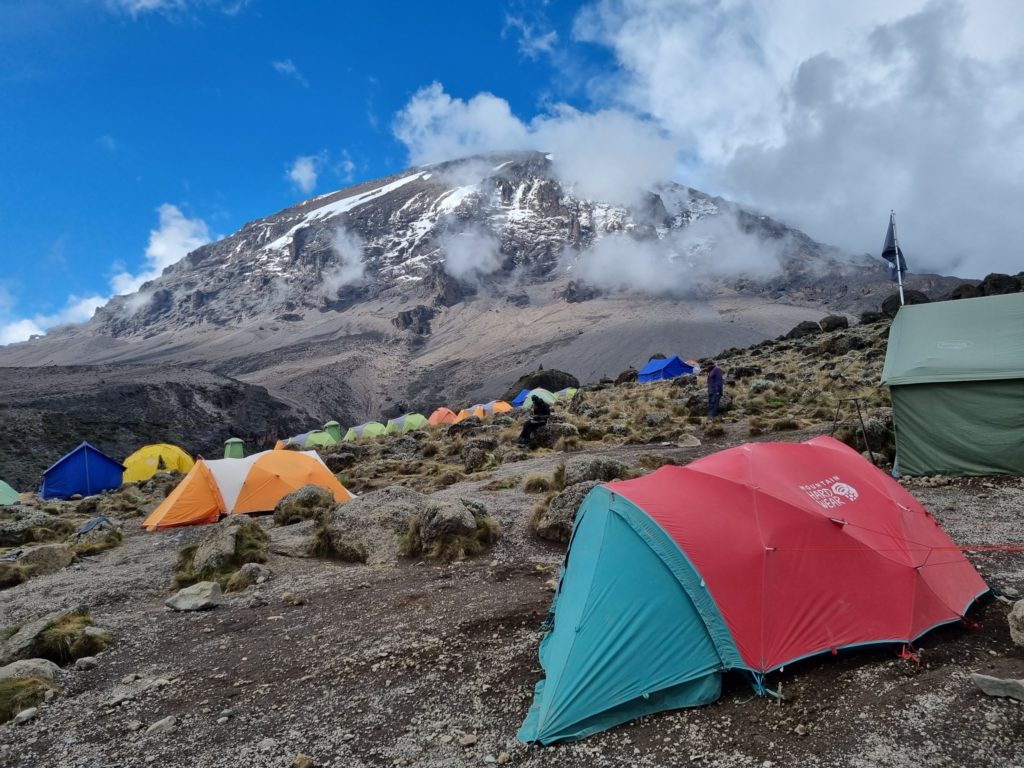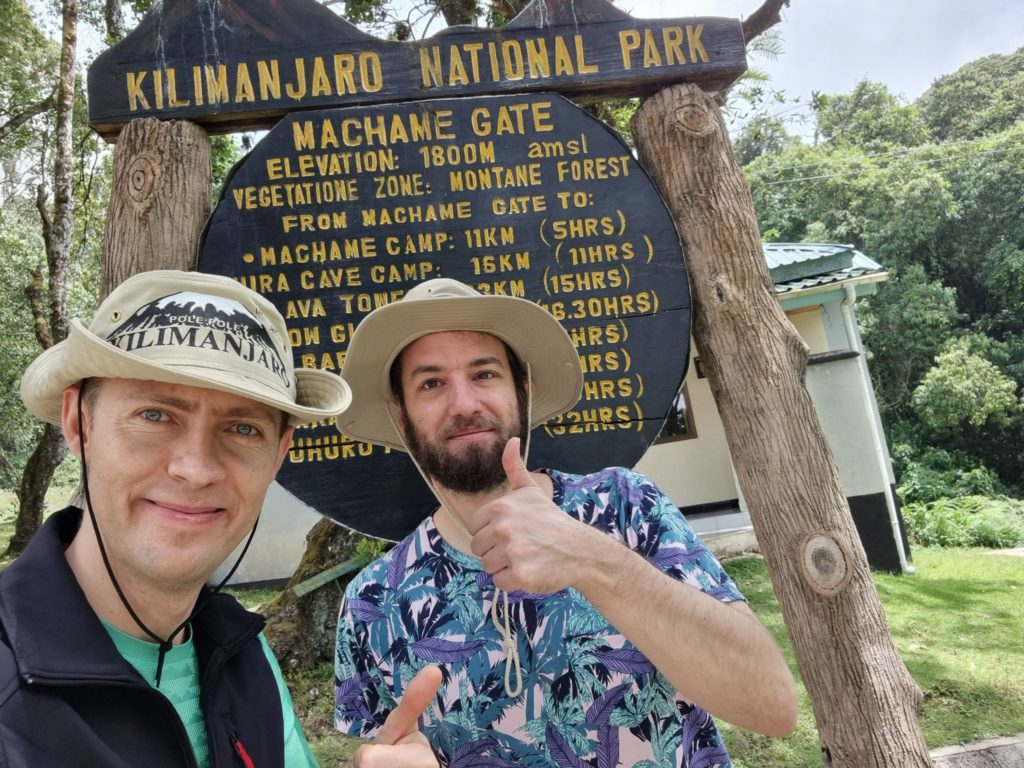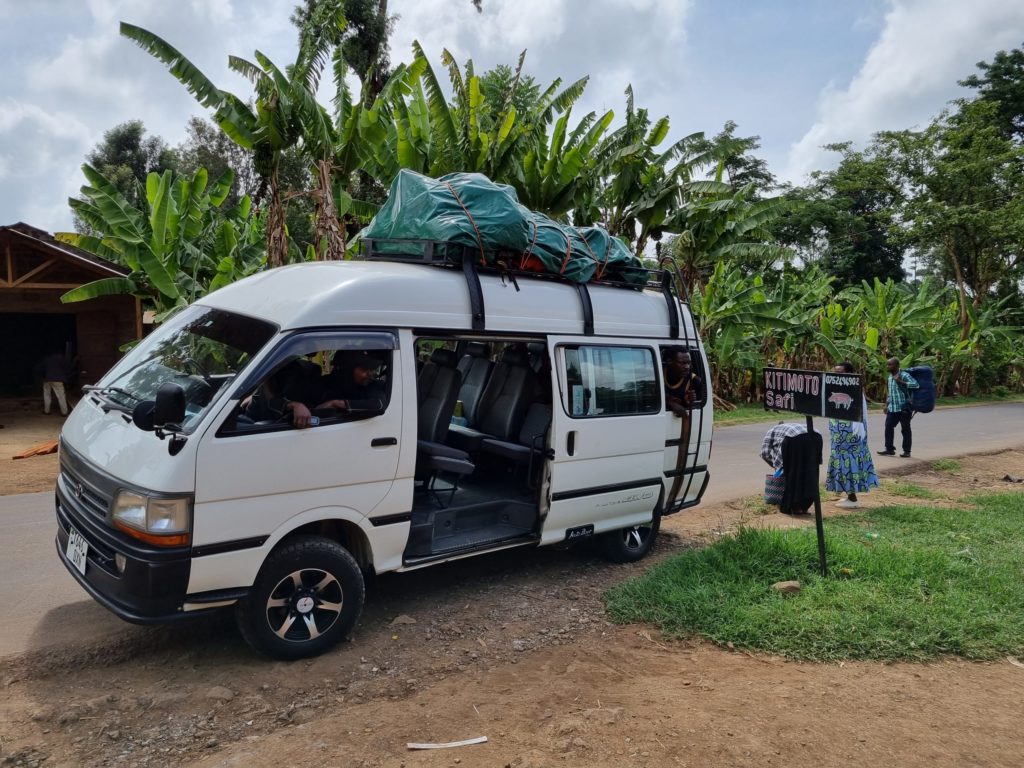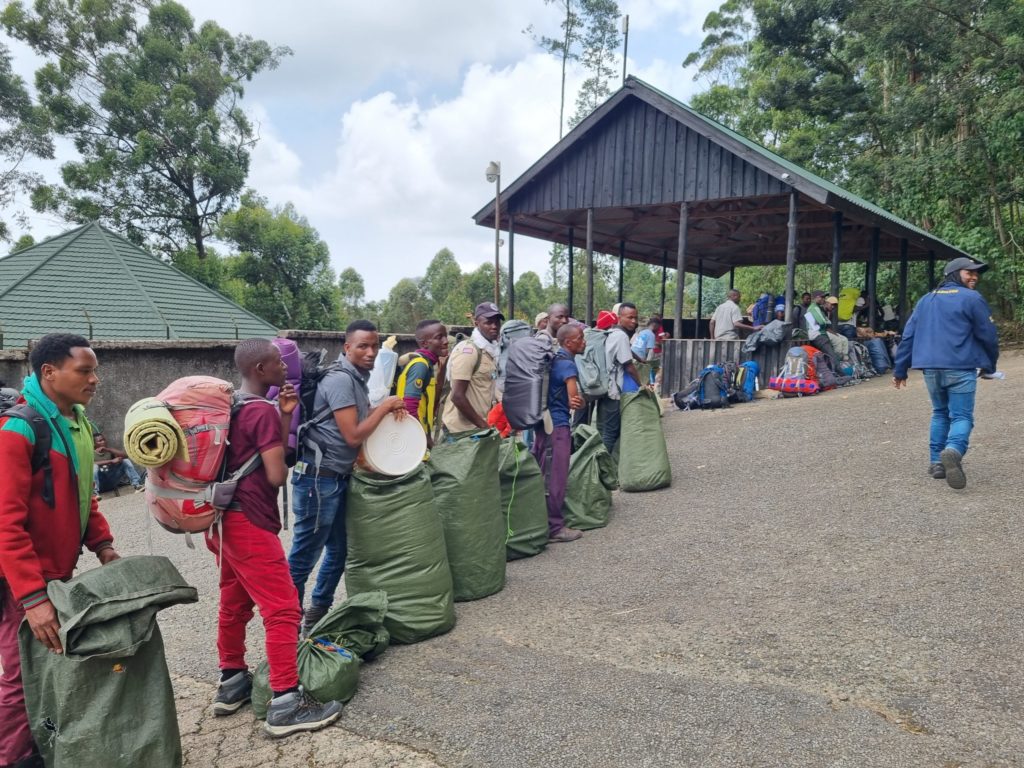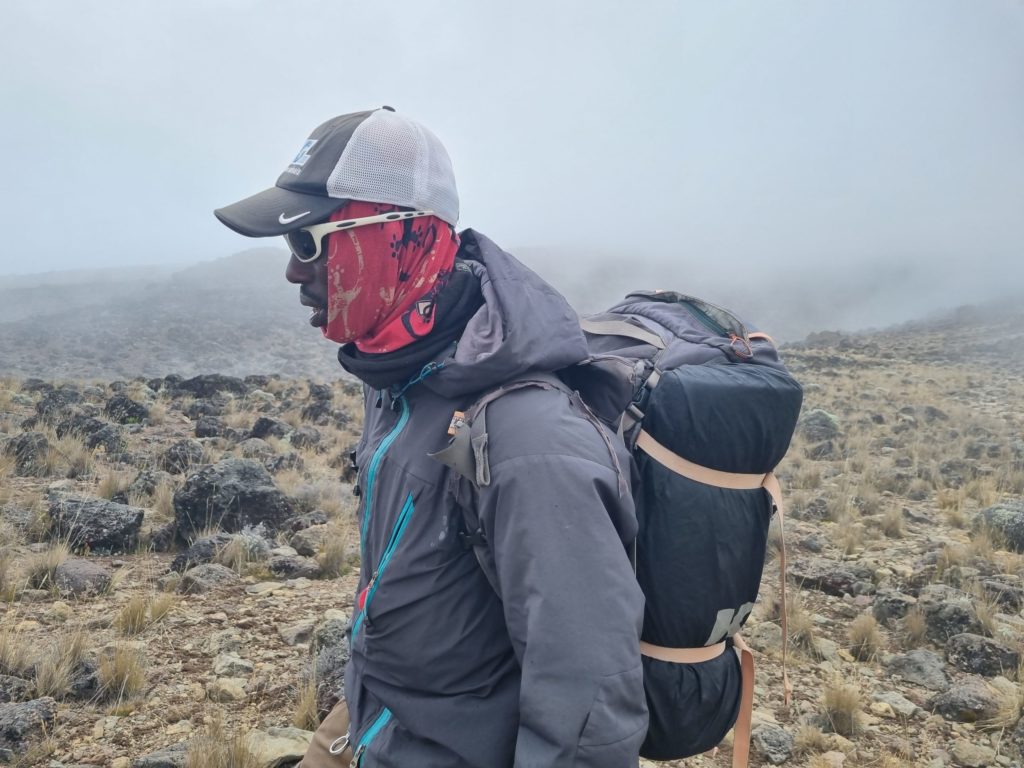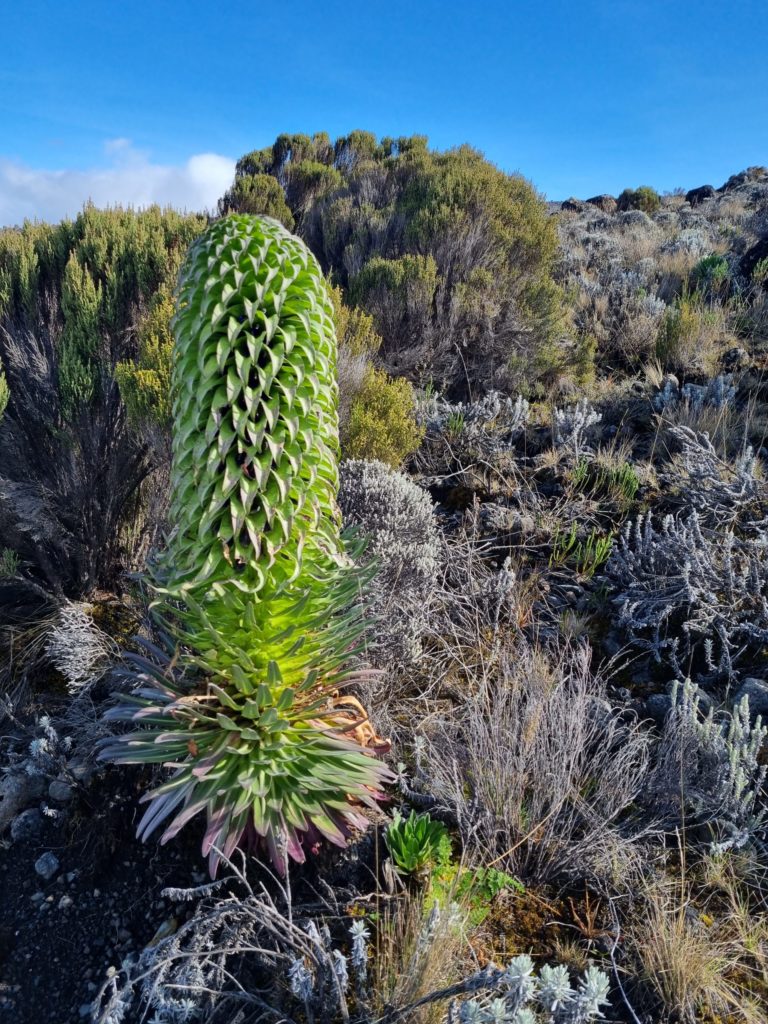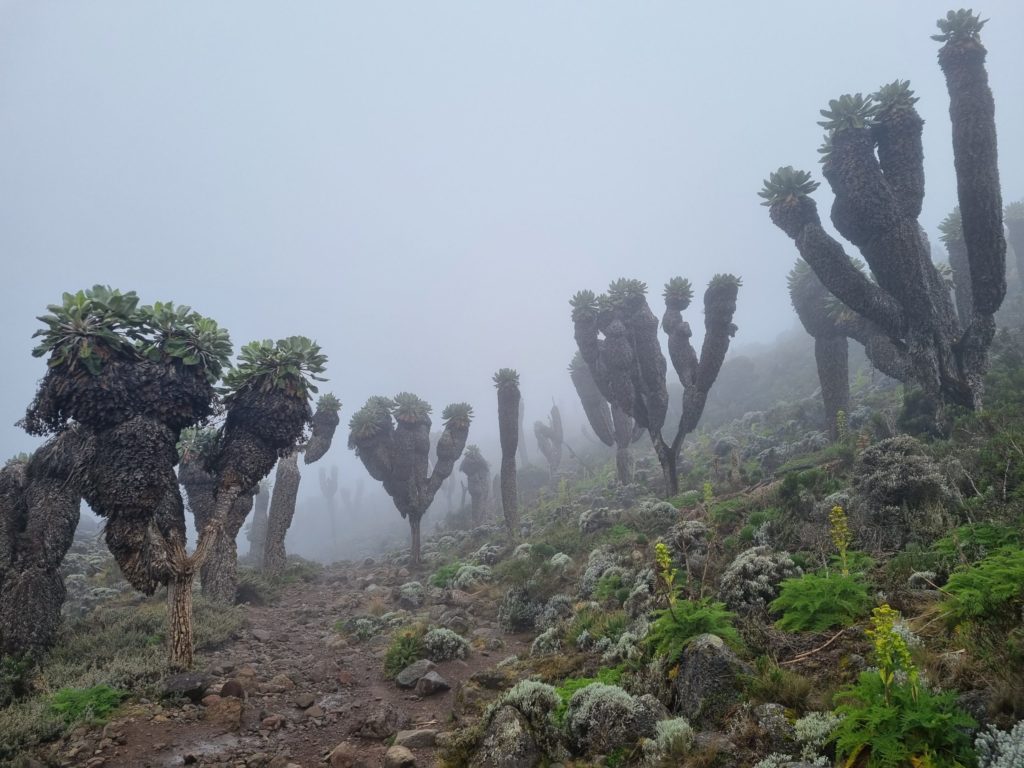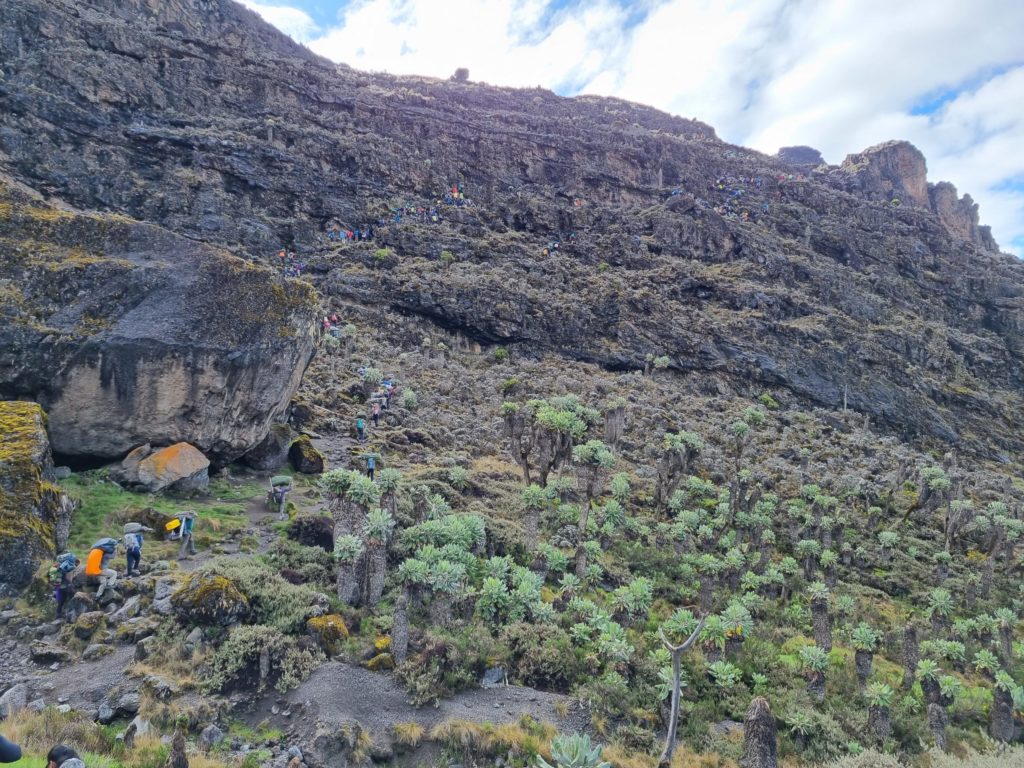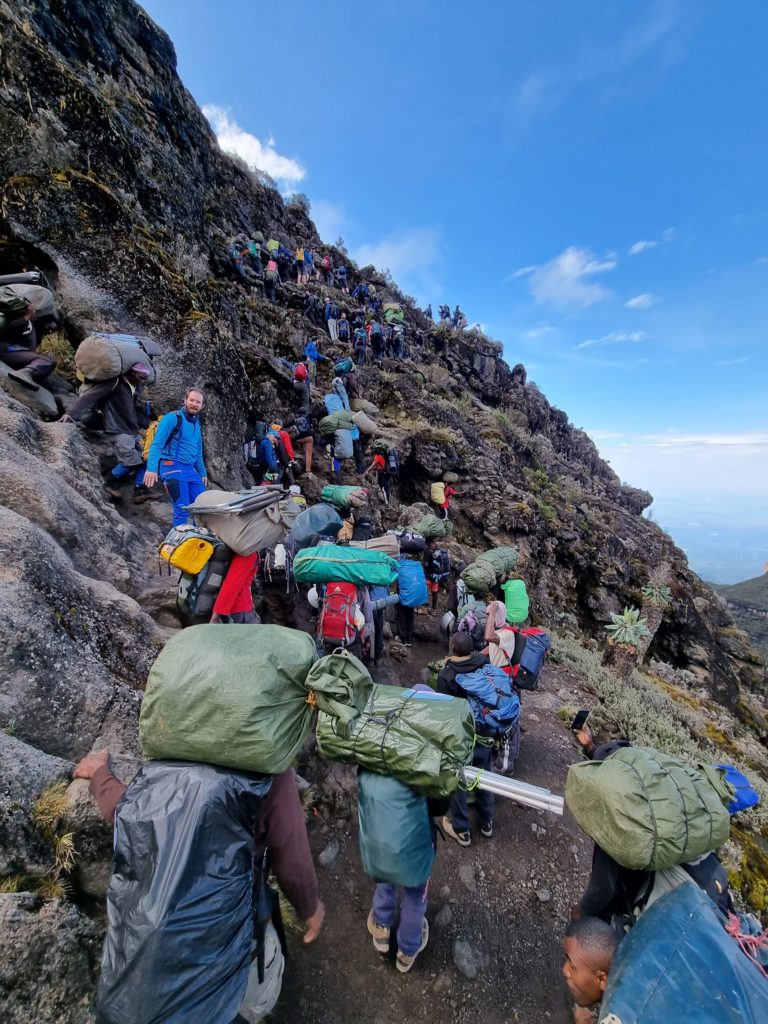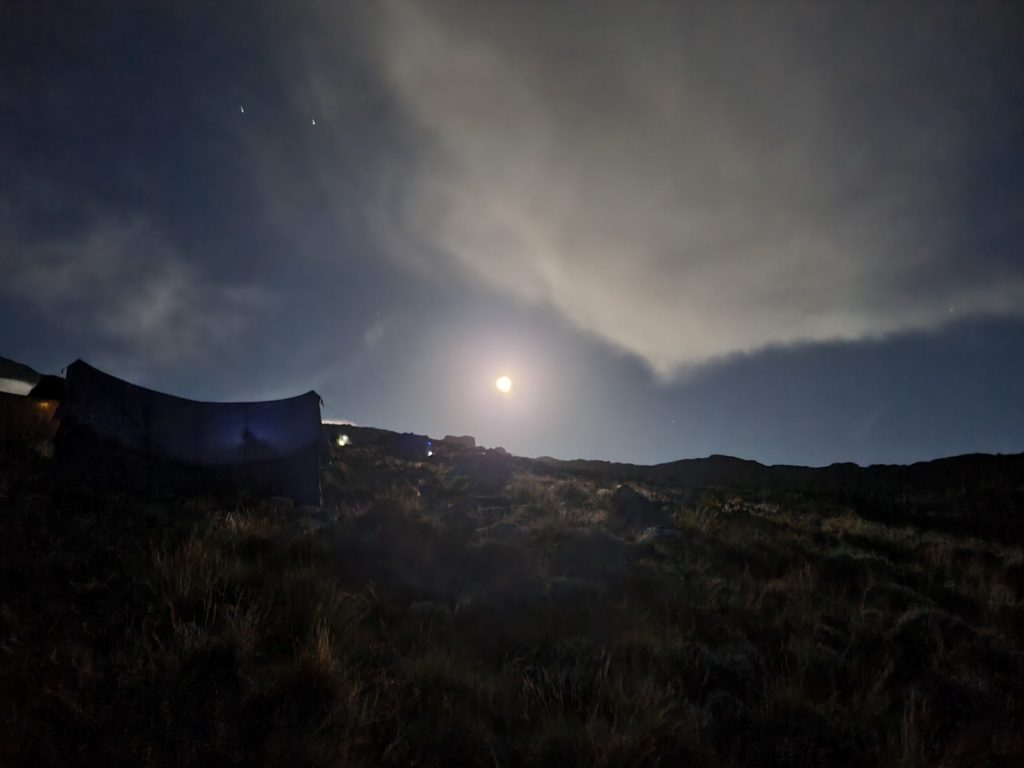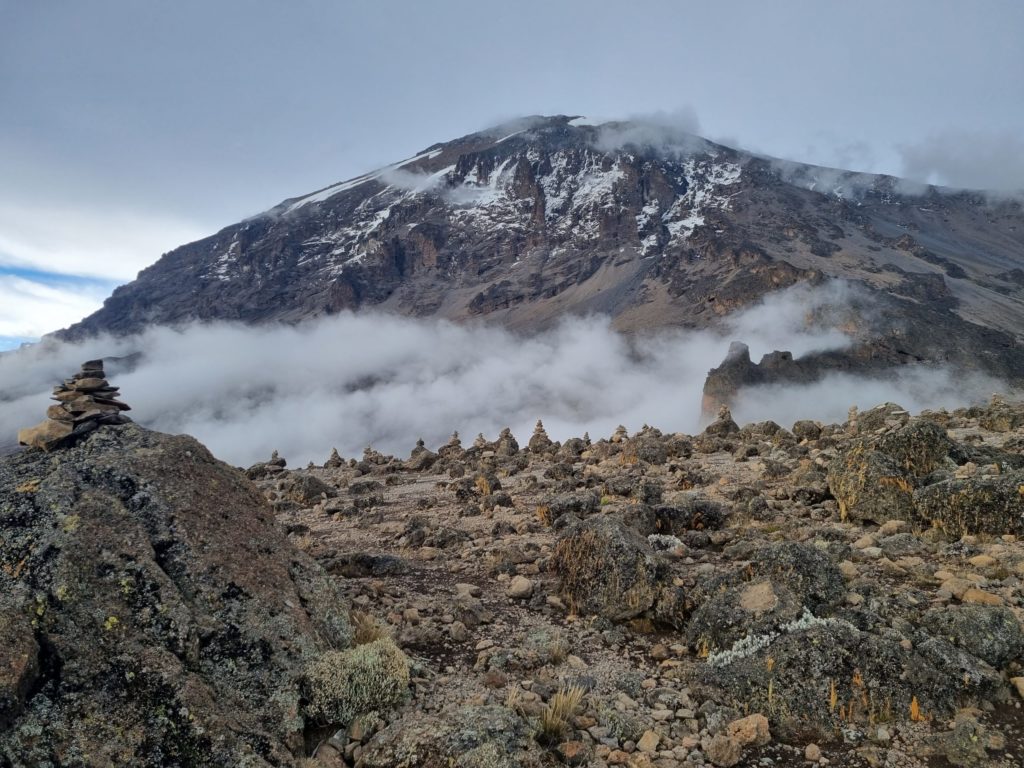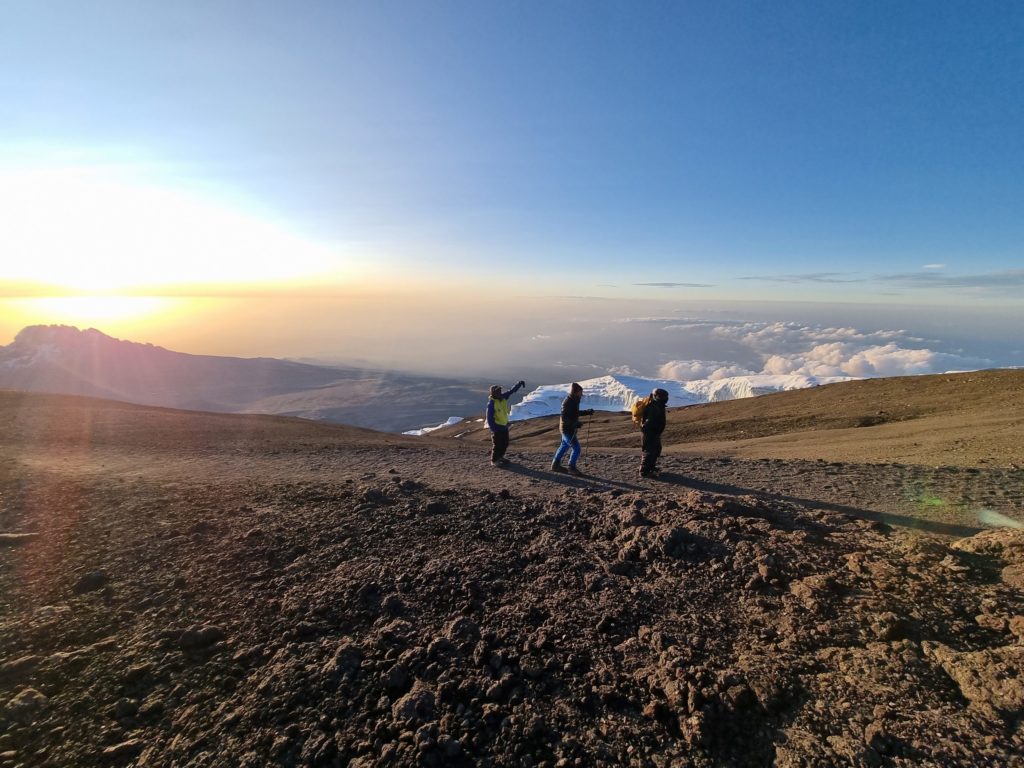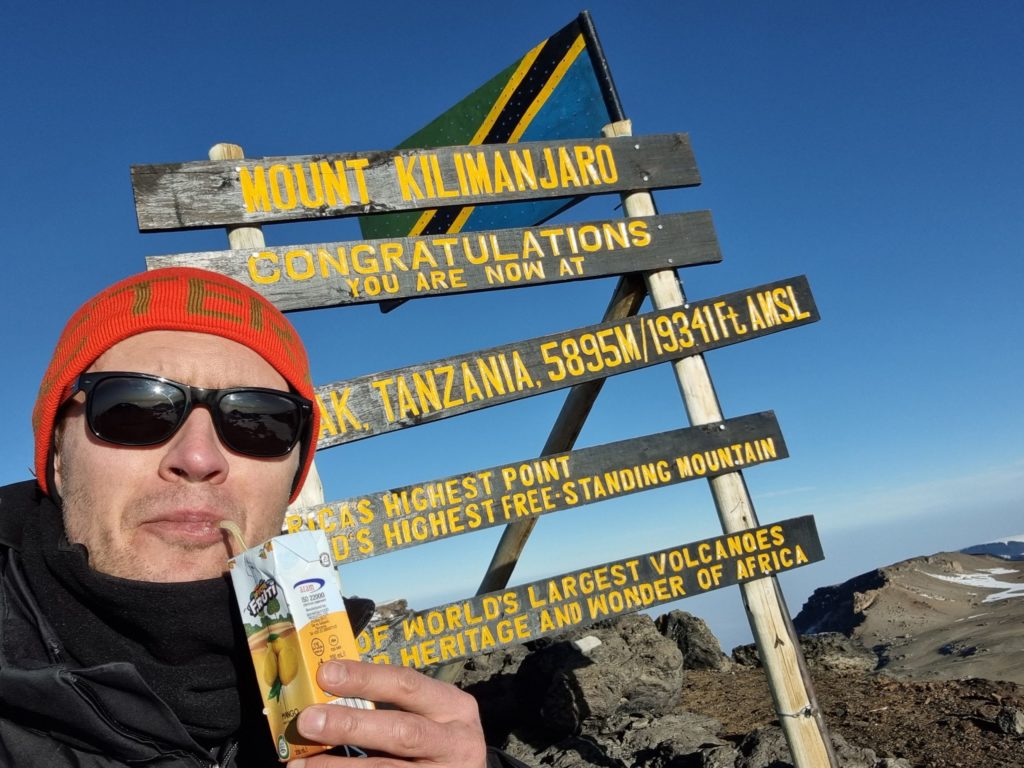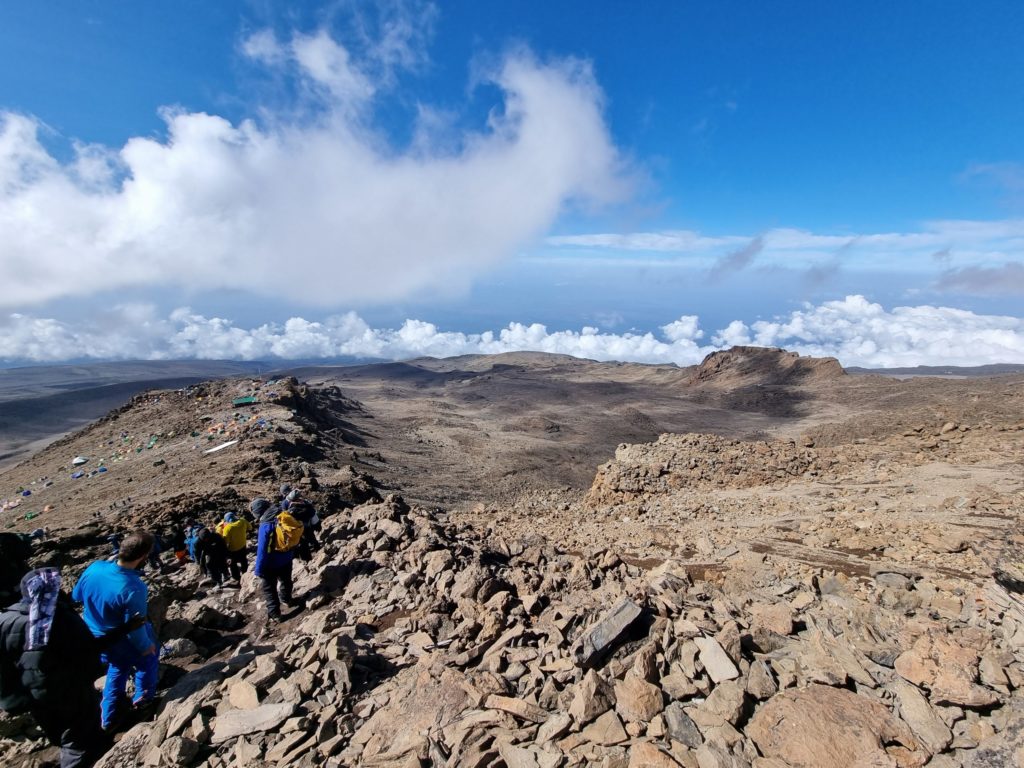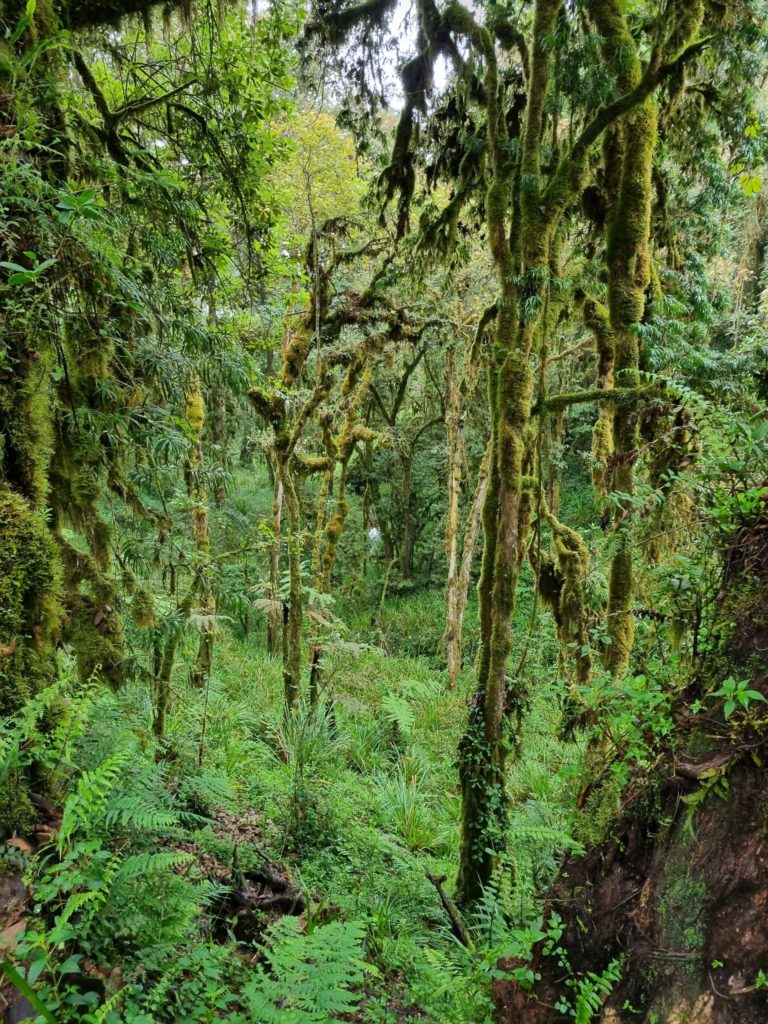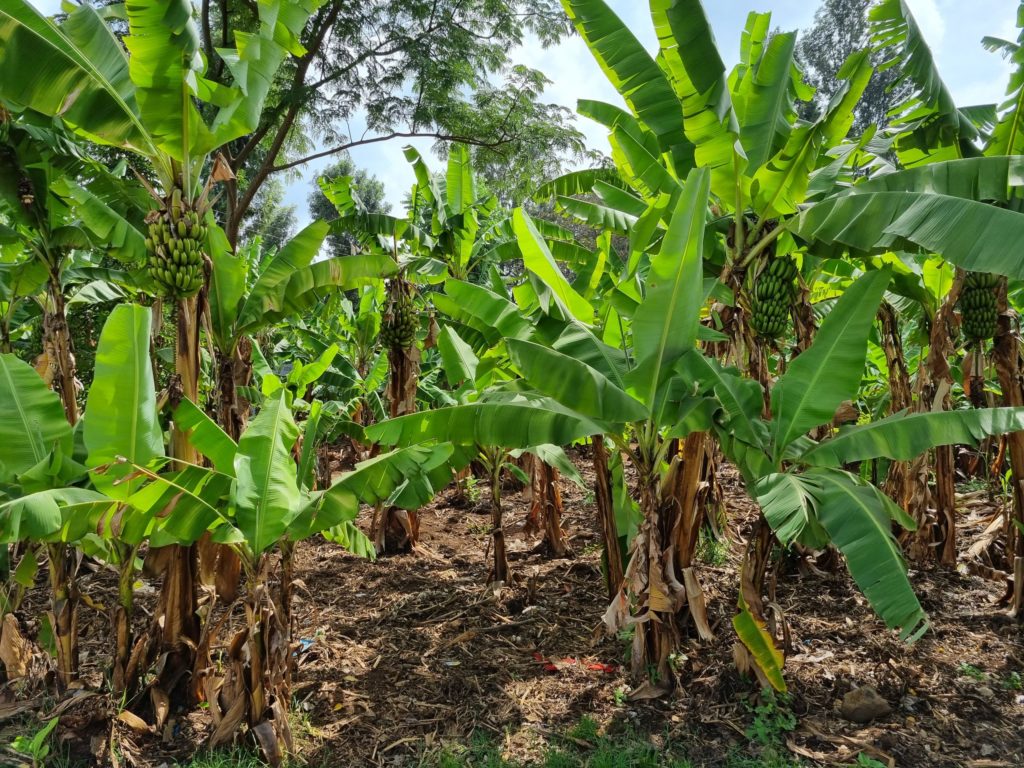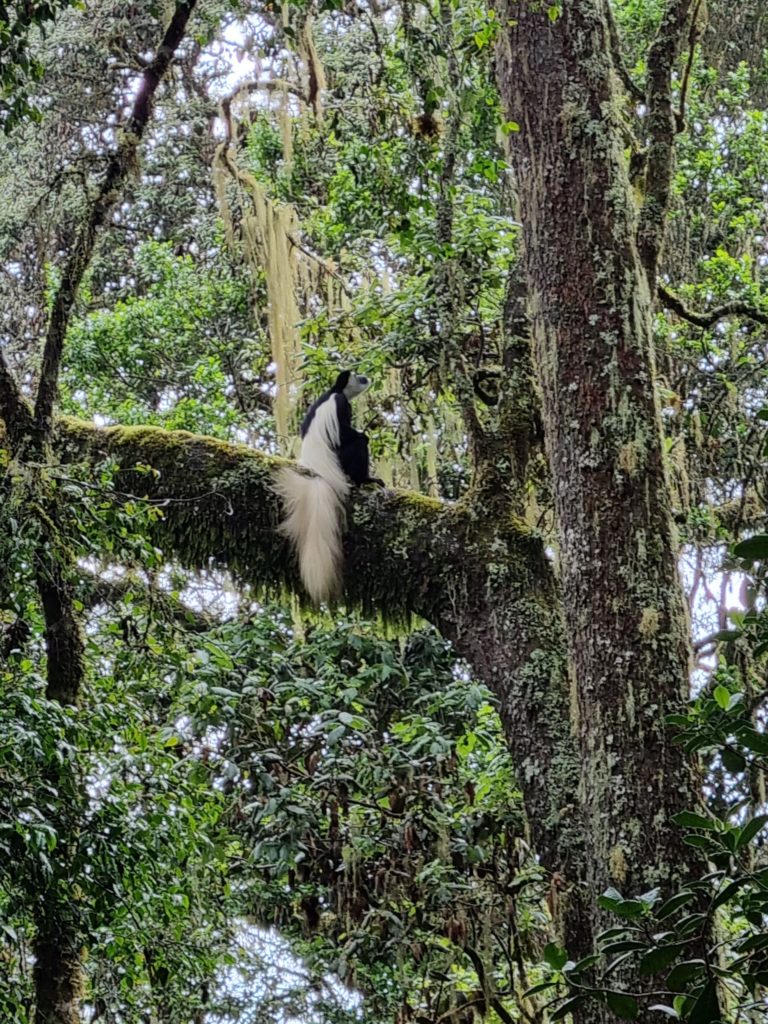Dear friends,
How often does your inner clock give you a wake-up call? How often do you have an idea so big that it frightens you? And most importantly, how often do you decide to follow your gut?
Sometimes, I wonder if I’m a bit crazy or if what’s going through my mind is science fiction. Perhaps some of our thoughts are only fantasies and will remain so, though others, we can make them happen with a bit of drive and heart.
In October 2021, the wheels were set into motion, starting when I caught Corona. Like every mountain enthusiast who has lots of free time, I took the opportunity to begin watching mountain movies. This made me realize that even an illness could bring something valuable.
Some movies jumped on top of my playlist like an athlete jumping obstacles in the Olympics, and a question started to whisper: could it be possible to hike the highest mountain in Africa, Kilimanjaro?
Planning such a hike would have been an adventure in normal conditions, but nowadays, while having unpredictable Corona regulations, it sounded like a fantasy.
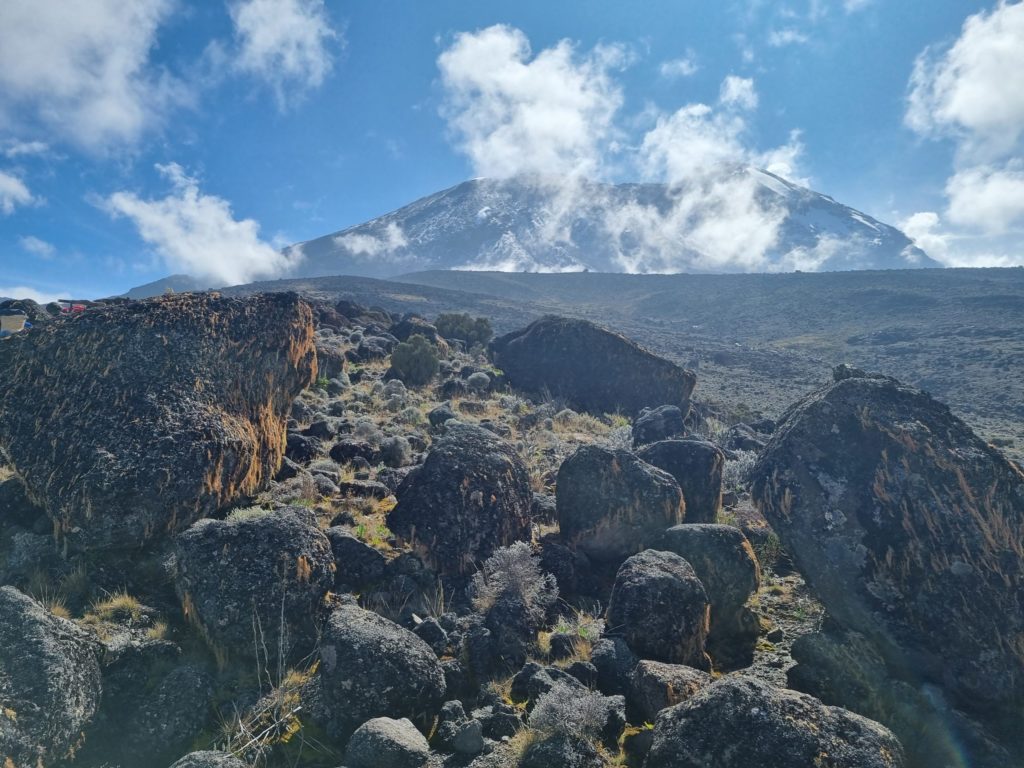
After sleeping on it for a few days, the idea didn’t disappear. One day passed, two days, three days, and it was still there. Not only that was it still there, but it was getting more powerful and more precise by the day.
After a few more days passed, I said to myself: OK, let’s do it! After deciding, I noticed that there were only some “minor” things left to do: create the plan, prepare for the hike, and the actual thing: climb the big rock.
Being surrounded by a large community of hikers, it was difficult to choose the “partner in crime.” After thinking a while, I decided to share my intention with one of my best friends – a very passionate and determined man, whom I’ve already been on many adventures with.
Having such a plan was one thing, but to have success, I had to present it right. After pitching the story in a way where the only possible answers were “yes” or “can’t wait,” we agreed. It was another step ahead, and the “me” turned into “we”!
We informed ourselves about the optimal time of year to do the hike, and we found out that there are, unfortunately, two rainy seasons in Tanzania. If you assumed that it was a long one and a short one, you were right! The long one is from early March till early May, and the short one takes up all of November and the first half of December.
At that time, it is raining cats and dogs all day long, and closer to the peak, it’s even snowing. I do not want to mention that there are no views because you will see only clouds.
With the rainy season in mind, we checked our calendars and decided to do the hike in the middle of February. Therefore, we planned to go in the middle of the short dry season! That doesn’t mean that we wouldn’t have rain or snow. There could be some, of course, but a maximum of 20% of the time.
Choosing the route is also essential because there are many possibilities. Some trails are shorter and faster, while others are longer and have a greater chance of summiting.
On almost all routes, you sleep in tents, but you can sleep in small huts on a particular one.
Some routes start and end from the same position. Others are more diverse, with a different beginning and ending point to enjoy more of Kilimanjaro’s scenery!
Acclimatization is an important aspect to consider because the overall success rate of summiting is around 50%).
When choosing a short route (5 days), the body does not have much time to acclimatize, and the overall success rate is around 25%. The hikers choosing one of these Kilimanjaro routes must be sure that they know how their body will respond to higher altitudes.
The longer routes (7-8 till 12 days) however, have an increased success rate because the body has more time to acclimatize. On those routes, the success rate goes up to 90%. I would find it very sad to come from Germany and not summit because we didn’t take one or two extra days to acclimatize properly.
The main idea is that acclimatization plays a decisive role: the longer you stay on the mountain, the greater your chance of reaching the peak.
On the mountain there are many routes, the names of these derive from Kilimanjaro’s 121 tribes:
Southern routes:
Lemosho – 8-9 days – sleeping in tents, very good for people who want to enjoy the mountain and are willing to spend more time acclimatizing.
Machame (Whiskey route) – This is the route we choose. It can be done in 6 or 7 days and has a total length of more than 60 kilometers. Huts are not available, so the hikers must sleep in tents.
Umbwe – faster route, sleeping in tents, has a total distance of 37 kilometers. It can be done in 3-5 days.
Be aware that Lemosho, Machame, Umbwe are practically the same route with different starting points. After two or three days, the trails join.
Mweka route is the descending route for all of these routes.
Marangu (Coca Cola Route) is the only route where people sleep in huts, and it is also called the Coca-Cola route because it is considered the cheapest, shortest route to the summit. Also, if you want to discover more from Kilimanjaro, it is impossible on the Marangu because you will go back down the same way you went up.
Northern Routes:
Rongai – 6-7 days – sleeping in tents – starts from the northeast; it is one of the most remote and wild routes and merges with the Marangu route.
Of course, the prices for each hike are different because the tourists have to pay for each day visiting the Tanzanian national park.
We decided to use the Machame route for hiking Kilimanjaro, 7 days / 6 nights because we wanted to see and experience something new each day. The trail has a total length of 64 kilometers, and it was an optimal choice.
Unfortunately, we couldn’t make the trip independently, because in the Tanzanian national parks you must be accompanied by a Tanzanian licensed guide.
After deciding the route, we started looking for the tour operator. We informed ourselves a lot about the tour operator, because cheap and good do not always go together. We could book something from Germany, but local offers were also available. For us, it was essential to choose somebody reliable, focused on the clients’ experience.
A significant part of the price is the fee for entering the park. Once this is deducted, the remaining profit is divided between the company and their employees. The respectable companies join the porter syndicate and pay standard wages to the porters. However, some companies, who are not a part of this syndicate, do not even respect the fundamental rights of their employees.
After reading many reviews, we chose Almighty Kilimanjaro, a local company from Moshi, Tanzania. In the end, we were more than satisfied with their services, and from our point of view, they are very friendly, punctual and reliable. They also provided flexible dates, and after booking, we had to make a down payment of only 20%. The remaining amount would be paid after we reached Tanzania.
The next step was transportation, so we took another brave step and booked our flight tickets. I say brave because, in November, Omicron just appeared on the stage, and nobody knew the impact this new variant was going to have.
At that point, the current status was: we had the mountain, the team, the date, the travel agency, and the flights. After more research, we added: equipment, vaccines, medicines, and travel insurance.
Months passed, November, December, and we started to be more active from January. What an excellent way to start the new year!
After speaking with my medical doctor, we started with vaccines against the specific diseases from Africa: Hepatitis AB, Typhoid, Tetanus, and of course, the Booster: Corona 3rd edition.
Medicines for headaches, flu, diarrhea, or altitude sickness are also mandatory. A good thing to mention here is a solution for altitude sickness: only bringing a sick person lower with 500m will make that person feel a bit better.
Also, to be protected against Malaria, I started one day before the trip to take pills, Malarone. It is not complicated, just one pill at the same hour each day. After the trip, I continued with the same treatment for seven days. The danger of getting Malaria comes when you are in the city, when doing a safari, or in Zanzibar. After 2500 m, people are safe from mosquitoes.
Another thing we had to consider was not to use scented shampoos, perfumes, or deodorants because the mosquitoes are attracted to them.
On very high altitudes, the ultraviolet light was much stronger, so we had long sleeves and used excellent sunscreen as much as possible.
Two weeks before departure, the Corona numbers skyrocketed, and Tanzania started requiring PCR testing on entry. We understood that we had to protect ourselves and get on those planes. How did we do that? Pure isolation. We quit social events, hikes, or even the gym. Actually, in the last three weeks before the trip, we felt like monks with only one thought in mind: Uhuru Peak.
Two days before departure, we sprayed the clothes and equipment against insects. Guess it worked because we didn’t see any bugs the whole trip.
One day before departure, I woke up at 6 A.M. and went to do the PCR test. Even though I felt completely healthy, I was very fearful. I went in, did it, and it was over. Now the only thing left was to wait for the results.
The magical day came: the 10th of February, the day we should physically start our journey. I said physically because mentally, the whole adventure started many months ago.
That day, I was also afraid because it was already 10 A.M. and the PCR test result had not yet arrived. I wrote some emails, called a few times, and some very supportive people managed to send me the results in less than two hours. My luck, because without them, I would not be allowed on the plane!
We planned to meet at the airport in the morning, but we surprisingly met at the train station. Coincidence? No, maybe synchronicity, but this is another story.
At the airport boarding desks to our Qatar flight, there was a large crowd, the Qatar employees double-checked everything: QR codes, PCR tests, insurance, flight tickets, and passports.
We also had some additional questions regarding our suitcases, because we had to change planes and airline in Nairobi. After a while, we entered the plane and felt relieved.
The adventure had officially started.
To enter Tanzania, most people need a visa that costs 100 Dollars for US citizens and 50 Dollars for non-US citizens. If someone wants to move faster, they can apply for an e-visa online.
After 23 hours of traveling, including changing one train, three planes, and one bus, we finally arrived in Moshi. We were so close to the start. We had already seen the big rock from the aircraft, so our excitement grew by the minute.
Before the hike, we did an equipment inventory at the hotel. The guides took care of us and went through our equipment, to ensure the proper gear was there. If something was missing or not adequate, they offered us the possibility of renting it for the hike’s duration. Also, I photocopied all travel documents and left them in a different place at the hotel (travel insurance, passport, and flight tickets.)
Almighty Kilimanjaro prepared 11 people to ensure we summit: one guide, one assistant guide, one cook, and eight porters. We were surprised that an entire football team supported our hike.
We discovered that our assistant guide Roy was also a nature specialist, and he named most of the flowers and animals on our way up. He also revealed that only 50 % of the typical hikers are there because of Covid, making the trip not so crowded.
What do you usually do when you hike many hours each day? Of course, you get to know people better and learn more about their culture. It is precisely what we did, including learning a few words in Swahili, the Tanzanian language.
Jambo or Mambo means hello,
Asante means thank you,
Asante Sana means thank you very much,
Karibo means you’re welcome,
Lala Salama means sleep well,
and the most frequent: Pole, Pole means take it slowly.
The summit of the Kilimanjaro massif, Uhuru peak, means freedom in Swahili. Now I know much more clearly, what is important for the Tanzanian people.
During the day, the guides made sure that we drank enough water because optimal is around 3-4 liters per day. We used many isotonic tablets to improve the water because it tasted different after purification and boiling.
On some days of the hike, I encountered a headache. Still, these symptoms were to be expected when going to higher altitudes. I had two choices: one was to take Ibuprofen, another one was to switch to Diamox. I am glad that Ibuprofen worked, because many people complained after taking the Diamox pills: they had to go pee more often. Imagine how it would have been to go ten times, in the middle of the night, to “see the stars.” Not so pleasant, but if you want to summit, you do what you have to do.
The days went by, and on the way to the summit, we saw bizarre trees that seemed to make the scenery look mystical; we saw almost unnatural plants and animals that you only see on Animal Planet. With that in mind, we understood how vast and diverse the world we live in is.
Almost 30,000 people from all over the world come to climb Kilimanjaro every year. Of these people, around 40% are American, 40 % from the UK, and 20% from the other parts of the globe. Between all these people, we met some guys from Australia. What was so special about these Australian guys is that they also had a problem with the temperature. For them the coldest time in winter is 21 degrees! For them to be around zero, felt freezing. Imagine going for a week in a place, where the average temperature is -20 degrees to understand their situation.
On the 4th day of the hike, from Barranco Camp to Karanga camp, we had a huge challenge ahead of us: the climb of Barranco-Wall. Imagine that you have to climb up a 250 m wall on a two-meter narrow path.
The number of tourists had almost tripled because all the south-eastern routes joined after the third day. Imagine more than a thousand people, tourists, guides, and porters climbing the same path. Also, if it happens to rain, the game is taken to the next level.
It was a special night at Karanga Camp: we were a bit over 4000 m, which meant we had tickets in the first row to see the stars. The moon also gave a show, being the star of the day! Or of the night, in our case. It was glowing so hard, and we needed sunglasses to look at it. Who would have thought of sunglasses to look at the moon?
At Barafu Camp, we had a perfect position for the tent on the fifth night, and the mattress was straight with no inclination. After so many nights, it was a blessing. The best arrangement so far.
The only thing that worried me was that our tent was on the edge of a cliff. And when I say the edge, I literally mean the edge. Two meters to our side was the vast valley, which was more than a couple of hundred meters below. We had a fantastic view indeed, but we needed to be highly cautious if we wanted to “see the stars” in the night.
That night, we planned to conquer the summit. We went to bed around 8 P.M., intending to wake up at 12:30 and start at 1 A.M. The thing is, I didn’t get much sleep being at more than 4700m. However, I could rest my body and mind with some special mind control techniques. Every day I am amazed at what our bodies can do.
On the way to the top, I encountered many physical and mental barriers that could have stopped me: impatience, impulsivity, slow walking, and -10 degrees all the way. To get my point: if you walk too slowly, you freeze, but if you start to hike faster, you run out of energy after a few minutes.
The path to the summit zig-zagged between the cliffs, and we had to be aware of our body, energy, and breath. We had to do countless breathing exercises only to get to the Stella-Point(5756m) one hour below the summit. After that point, the road is more or less straight, with almost no inclination. With all these challenges, at 7 A.M., we reached at 5895 m the summit of Uhuru Peak.
With the sun on one side and the glacier on the other side, that perfect African sunrise will stay in our minds and hearts forever.
To celebrate that magical moment in a classical German way, we used something local, and so, we drank the best African Mango juice, instead of the traditional “Gipfel-Bier.”
With an enormous smile on our faces, we started to go down.
We felt sorry for many hikers because some turned back. They couldn’t breathe or felt very dizzy. For that fact, I understood why the success rate is only 50%.
Around 11 A.M., we arrived back at our tent where we had a bite to eat, rested a bit, and at 1 P.M. we set off for the 3000m camp. It took us four hours to arrive at 3000m, and there we got a fantastic surprise: it was warm, and you could stay outside without your jacket.
Before going to bed, we did the day’s review and started imagining the hotel’s hot water, the coffee, and the restaurant’s a-la-carte menu.
The guides and team sang and explained the Kilimanjaro song on the way back. We were extremely moved to hear eleven people sharing their culture and singing with a joyful heart that beautiful song.
The story is about the snake of Kilimanjaro, and it represents the zig-zag path up the mountain. Each step is very challenging, and only the strongest hikers defeat the snake and reach the top.
We thanked Almighty Kilimanjaro’s team again at the hotel for being part of this incredible experience, and we received our climbing Kilimanjaro certificates.
After a whole week on the mountain, sleeping in tents, we were overjoyed when we entered the hotel room. After we enjoyed a long shower, we went straight to the restaurant. The celebration of climbing one of the seven summits began: we drank Kilimanjaro beer, ate pizza, ice cream, and drank more beer, of course.
On the way home, I changed two planes again and traveled around 28 hours. What can I say, I slept, read, slept again, looked back on some events, drank a lot of good coffee, and ate burgers. By the way… in Doha, the capital of Qatar, two burgers, fries, and a bottle of water cost 36 Euros. It is a bit pricey, but it is worth it for those who want to mark the conquest of Kilimajaro.
Can such an adventure transform you?
Oh, yes, it certainly can. The main goal of every adventure is to grow and transform you into someone more aware than before.
This experience helped me understand better the three levels of evolution: having – doing – being. After finding that unique combination between courage, hope, dedication, motivation, resilience, and joy you are able to change between them.
How do you feel after such a challenge?
You are calm, fulfilled, at peace.
It was confirmed to me again that pain and discomfort are temporary, and the feeling of accomplishment follows you each step of your life.
In the end, I want to reveal some fantastic Tanzanian words shared by Josef, our guide.
“One dream, one team, nonstop, to the top!”
Thank you so much, my friend!
Asante sana!
- Cosmin Mihoreanu
